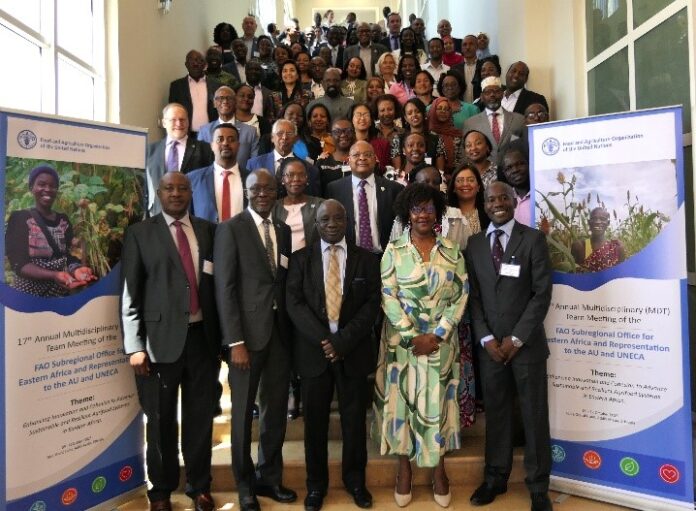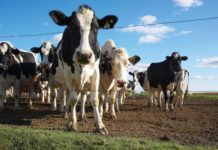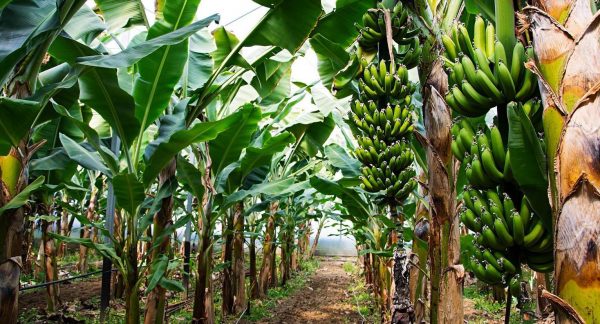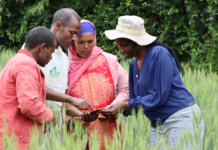Harnessing science, innovation, and digitization are crucial to boosting agricultural production and livelihood resilience in Eastern Africa – this was the key message at the 17th Food and Agriculture Organization Subregional Office for Eastern Africa (FAO SFE) multidisciplinary team meeting held from 10-12 October 2023.
Organized with the theme: Enhancing innovation and Cohesion to advance Sustainable and Resilient Agri-food systems in Eastern Africa, the 17th Multidisciplinary Team Meeting (MDT) was held in Addis Ababa in the presence of government representatives from seven East African Countries, Djibouti, Eritrea, Ethiopia, Kenya, South Sudan, Somalia and Uganda. The meeting focused on driving agricultural and rural sustainable development through innovation, scaling up new partnerships and cooperative mechanisms, boosting the demand-driven provision of public goods in food and agriculture, and team cohesion.
In a statement read by State Minister for Livestock and Fisheries, Fikru Regassa, the Minister of Agriculture for the Federal Republic of Ethiopia, H.E Girma Amente reflected on the current food security situation of East Africa region where, as of the year 2023, approximately 20 million people in the worst-hit East African countries, including Ethiopia, Kenya, and Somalia, faced hunger due to the unprecedented drought in the sub-region. He further noted, “Science, innovation, technology and partnerships are pivotal in advancing sustainable and resilient agri-food systems to meet the huge demands in the region.” He added that research and development are cornerstones of this effort while noting his country Ethiopia’s recent success in wheat production as a testament to the positive impact of innovation and technology.
On his part, the FAO Assistant Director-General and Regional Representative for Africa, Abebe Haile Gabriel also reminded a myriad of unique challenges that the countries in Eastern Africa have been grappling with, which encompass the convergence of climate extremes, transboundary pests and diseases, protracted conflicts and economic downturns, among others.
Acknowledging existing groundbreaking innovative initiatives of FAO in the Eastern African sub-region as a response to such challenges, Haile Gabriel stressed, “There is a need to scale up innovative and rewarding initiatives as the journey towards transformation of agrifood systems calls for innovation, effective collaboration and partnership and concerted actions.”
The MDT discussed the need to improve current agricultural practices to improve and protect livelihoods from droughts and food security threats. Agriculture remains the lifeline of the region, employing a vast majority and significantly contributing to local and regional GDP. However, it faces a multitude of obstacles such as rising conflicts that have increased displacement, hampering development and resilience efforts.
The outgoing Subregional Coordinator for Eastern Africa, Chimimba David Phiri, highlighted this further noting the majority of agriculture in East Africa is rain-fed, and there is a constant threat by recurrent droughts, floods and the emergence of new pests. Pastoralists, who play a vital role in our ecosystem, often face neglect, are threatened by diseases, and bear the brunt of climate change. Changing migration patterns further strain our resources and food security mechanisms. “While we face formidable challenges, our region is also ripe with opportunities. We can navigate these challenges with collaboration and innovation and harness our potential for a brighter future. The digital revolution offers us a unique opportunity. Investing in digital agriculture can attract the growing number of youths graduating from universities and colleges in Eastern Africa. It is not just about technology, but about shaping the future of agriculture in our region”, he said.
Innovative practices, such as integrated farming systems and Regenerative Agriculture, promise to increase farm income while conserving the environment. These practices represent a harmonious blend of tradition and innovation, ensuring our agriculture is sustainable and profitable. The livestock sector, with its immense potential, requires our attention. Investing in livestock feed and addressing related issues can make this sector resilient and less vulnerable to recurring climate shocks, Phiri added.
Innovative practices, such as integrated farming systems and Regenerative Agriculture, promise to increase farm income while conserving the environment. These practices represent a harmonious blend of tradition and innovation, ensuring our agriculture is sustainable and profitable. The livestock sector, with its immense potential, requires our attention. Investing in livestock feed and addressing related issues can make this sector resilient and less vulnerable to recurring climate shocks, Phiri added.
Having benefited from the attendance of the Ministry of Agriculture and the permanent secretaries from seven countries in Eastern Africa out of the total nine, the MDT meeting heard country good practices, lessons learned and priorities in agri-food systems transformation. There were rich discussions on improving programme delivery towards addressing existing gaps reflected by the member states, aided by Science, Innovation, and Digitalization in Agriculture. After hearing good practices in implementing science and innovation in agriculture and food security programmes in FAO Country offices, the meeting held practical sessions on delivering on FAO corporate priorities -the four Betters: better production, better Nutrition, a better environment, and a better Life.
The MDT presented the linkages of country frameworks and the four betters to better mainstream activities on the ground to improve the efficiency of programme delivery. Like previous MDTs, this one also contributed to strengthening team cohesion that supports the development of collaborative work plans for the new biennium.









[…] Source […]
Comments are closed.